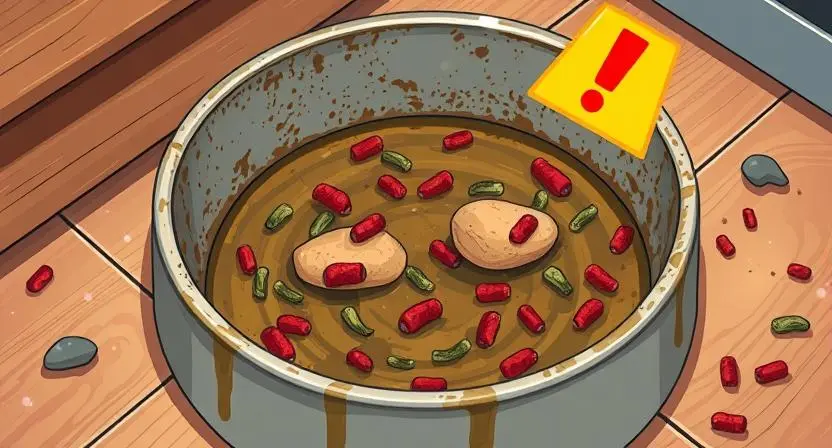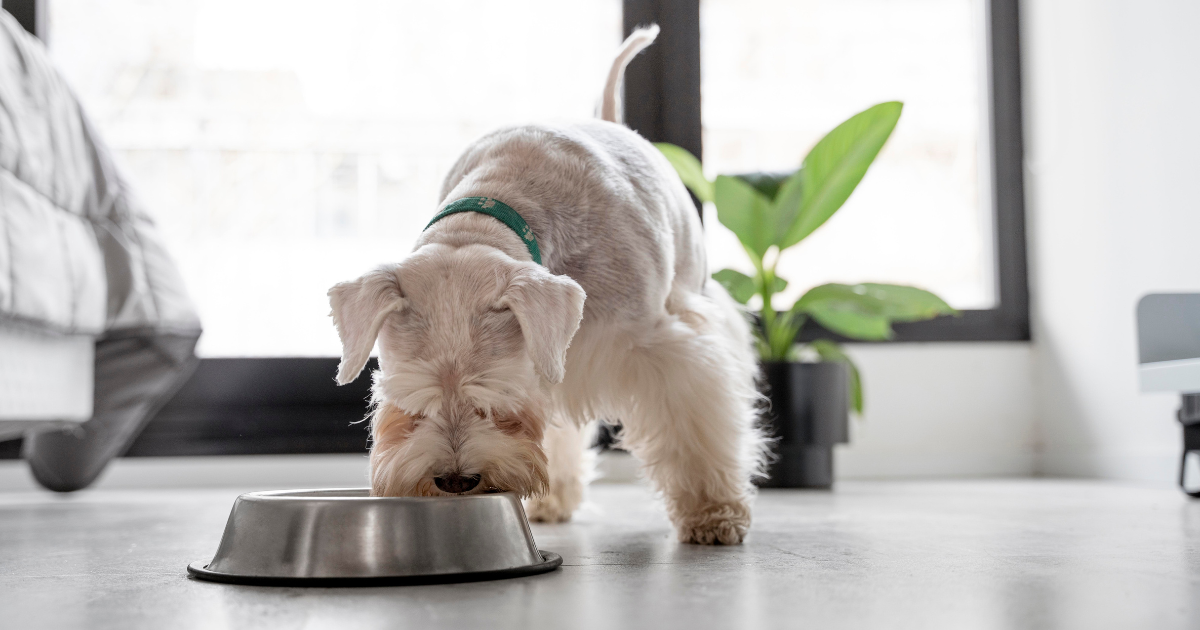How Often Should I Wash My Dog’s Bowl? The Simple Habit That Could Save Their Life
Table of Contents
A 2011 study by the National Sanitation Foundation (NSF) identified pet bowls as the fourth germiest item in the average home—ranking dirtier than toilet seats. This shocking discovery raises a critical question: how often should I wash my dog’s bowl? What’s growing in your dog’s favorite dish, and how can you protect them?
The Quick Answer Box (TL;DR)
The Bottom Line: How Often to Wash
Vets and pet health experts agree:
- Food Bowls: Wash with soap and hot water after every meal, or at a minimum, once per day
- Water Bowls: Wash and refill with fresh water once per day
What You’ll Learn
In this guide, we’ll answer the essential question of how often should I wash my dog’s bowl and go beyond the ‘what’ to explain the ‘why.’ You’ll learn about the hidden risks in dirty bowls, the correct vet-approved cleaning methods, and which bowl materials are safest for your best friend.
Why Daily Washing is Non-Negotiable: The Science of a Dirty Bowl
Understanding how often should I wash my dog’s bowl requires examining the science behind what happens when bowls remain dirty. The answer isn’t just about cleanliness—it’s about preventing serious health risks.
Meet Biofilm: The Slimy, Invisible Danger
That slippery film you feel on your dog’s water bowl isn’t just harmless residue—it’s biofilm, a complex community of bacteria encased in a protective slimy matrix. This microscopic fortress forms within hours of your dog’s first drink and creates the perfect environment for harmful pathogens to multiply.
Here’s what makes biofilm particularly dangerous:
- It can’t be removed with a simple rinse
- The protective layer shields bacteria from disinfectants
- It provides a breeding ground for disease-causing microorganisms
A Petri Dish for Bacteria: What’s Really Growing in There?
Research conducted by the NSF and FDA has identified several harmful bacteria commonly found in unwashed pet bowls:
| Bacteria Type | Health Risk | Affects |
|---|---|---|
| Salmonella | Food poisoning, digestive upset | Dogs and humans |
| E. coli | Severe digestive illness | Dogs and humans |
| Listeria | Serious infections | Dogs and humans |
| Staphylococcus | Skin infections, wound complications | Dogs and humans |
These aren’t theoretical risks—they’re documented findings from laboratory analysis of real pet bowls in American homes.

The Health Risks for Your Dog and Your Family
For Your Dog: The connection between dog health and bowl cleaning is more significant than many pet owners realize. Dirty bowls contribute to:
- Dental disease: Bacteria from food residue can lead to plaque buildup and gum inflammation
- Digestive upset: Harmful microorganisms cause stomach irritation and diarrhea
- Skin infections: Particularly canine acne around the muzzle and chin area
- Weakened immunity: Constant exposure to pathogens taxes your dog’s immune system
For Your Family: Cross-contamination poses serious risks to household members, especially:
- Young children who may touch contaminated surfaces
- Elderly family members with compromised immune systems
- Anyone with existing health conditions
The Correct Cleaning Protocol: How Often Should I Wash My Dog’s Bowl?
When pet owners ask “how often should I wash my dog’s bowl,” the answer depends on the cleaning method. Here are the vet-approved protocols that ensure your dog’s safety.
Method 1: Using the Dishwasher (The Easiest & Most Effective)
The dishwasher represents the gold standard for sanitizing your dog’s bowls. The combination of high heat and powerful detergents eliminates 99.9% of harmful bacteria.
Best practices:
- Place bowls on the top rack to prevent warping
- Use the hottest cycle available or “sanitize” setting
- Ensure bowls are dishwasher-safe before first use
Method 2: Washing by Hand (The 4-Step Process)
When handwashing is your only option, follow this veterinarian-approved protocol:
- Scrape: Remove all leftover food debris with a dedicated pet bowl scraper
- Wash: Use hot, soapy water (140°F or hotter). Scrub all surfaces, including the rim, bottom, and any textured areas
- Rinse: Rinse thoroughly with clean water until no soap residue remains
- Dry: Air-dry completely or use a towel dedicated exclusively to your pet’s dishes
Pro Tip: The best way to wash dog bowls by hand is to treat them like you would your own dishes—with the same attention to cleanliness and sanitation.
What Soap is Safe for Dog Bowls?
Standard, unscented dish soap is both safe and effective for cleaning pet bowls. The key is thorough rinsing to remove all soap residue. For dogs with sensitive skin or allergies, consider:
- Plant-based, fragrance-free detergents
- Natural alternatives like diluted white vinegar (though soap is more effective)
- Always rinse multiple times regardless of soap choice
Bowl Material Matters: Choosing the Right Option
Does Your Dog’s Bowl Material Matter? (Yes, It’s Crucial)
The material of your dog’s bowl significantly impacts both cleanliness and health outcomes.
| Material | Rating | Pros | Cons |
|---|---|---|---|
| Stainless Steel | ⭐⭐⭐⭐⭐ Best | Non-porous, dishwasher safe, durable, easy to sanitize | Can be noisy, may rust if low quality |
| Ceramic/Glass | ⭐⭐⭐⭐ Good | Non-porous when intact, attractive, stable | Can crack (harboring bacteria), may contain lead |
| Plastic | ⭐⭐ Avoid | Lightweight, inexpensive | Scratches easily, harbors bacteria, linked to canine acne |
Why plastic bowls are problematic:
- Microscopic scratches create hiding spots for bacteria
- Porous surface absorbs odors and stains
- Associated with contact dermatitis and chin acne in dogs
Special Cases: Critical Cleaning Advice
Raw-Fed Dogs: Extra Vigilance Required
Dogs on raw diets face elevated risks of bacterial contamination. Every single use requires complete sanitization due to:
- Higher Salmonella concentrations in raw meat
- Increased risk of cross-contamination
- Potential for more aggressive bacterial strains
Protocol for raw feeders:
- Wash immediately after each meal (answering how often should I wash my dog’s bowl for raw diets: after every single feeding)
- Use bleach solution (1:10 ratio) weekly for deep sanitization
- Consider separate cutting boards and utensils for raw prep
Water Bowls: Answering How Often Should I Wash My Dog’s Bowl for Water
Many pet owners mistakenly believe adding fresh water to an existing bowl is sufficient. However, when considering how often should I wash my dog’s bowl for water specifically, water bowls require daily washing because:
- Biofilm forms rapidly in standing water
- Dust, debris, and backwash accumulate
- Bacteria multiply even in “clean” water
Multi-Pet Households and Sick Pets
Prevent cross-contamination with:
- Individual bowls for each pet
- Color-coding or labeling system
- Immediate isolation of sick pet’s dishes
- Daily sanitization of all feeding equipment
A Simple Habit for a Healthy Pet
How often should I wash my dog’s bowl? The definitive answer is daily. Washing your dog’s bowl daily takes less than two minutes but provides immeasurable health benefits. This simple habit represents one of the most effective ways to prevent illness, protect your family, and demonstrate responsible pet ownership.
Remember: when someone asks “how often should I wash my dog’s bowl?” The answer is simple—daily washing is a small investment that pays massive dividends in your dog’s long-term health and happiness.
Frequently Asked Questions (FAQ)
Can I just rinse my dog’s bowl with water?
No, rinsing alone does not remove the dangerous biofilm layer where bacteria thrive. Only hot, soapy water or dishwasher sanitization effectively eliminates harmful microorganisms.
Is my dog’s chin acne related to their food bowl?
Yes, it can be. Scratches in plastic bowls harbor bacteria that cause skin irritation and acne on your dog’s chin and muzzle. Switching to stainless steel often resolves chronic skin issues.
How often should I clean my dog’s slow feeder or puzzle toy?
These feeding accessories should be washed after every use. Their complex shapes and crevices easily trap food particles and bacteria, making thorough cleaning essential for your dog’s health.
How often should I wash my dog’s bowl if they eat wet food vs. dry food?
Wet food bowls should be washed after every meal due to higher moisture content that accelerates bacterial growth. Dry food bowls can be washed once daily, but immediate cleaning after meals is still the gold standard for optimal health.
Should I wash my dog’s bowl separately from human dishes?
While it’s not strictly necessary if using proper dishwasher sanitization, some households prefer washing pet dishes separately for peace of mind. If handwashing, using the same soap and hot water standards ensures safety for both pet and human dishes.


